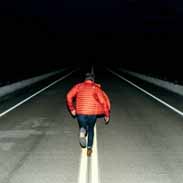Theatre Exam #2: Chapter 6 – Flashcards
Unlock all answers in this set
Unlock answersquestion
The order and process of developing a design for a play could be summarized bv the following steps
answer
reading the play, researching, imagining, creating a physical presentation, collaborating, approving for the budget, ensuring viability, and implementing
question
Realistic costuming took over when which of the following became a major guiding principle in drama?
answer
historical accuracy
question
Which of the following types of stage is completely surrounded by audience?
answer
arena
question
What kind of scenery attempts to depict, in great detail, a specific time and place in the observable world where the play's events are presumed to take place?
answer
realistic
question
Makeup serves all the functions EXCEPT which of the following?
answer
Makeup may be used to help improve the actor's diction.
question
Which person is responsible for the building and operation of stage machinery and scenery; has charge of lighting crews and industrial scheduling; has charge of moving scenery in and out of the theatre; and establishes policies and directives for scene shifting?
answer
technical director
question
Which of the following is true of the history of lighting in scene design?
answer
Even before the advent of electricity, designers attempted to manipulate lighting with candles, oil lamps, and reflective surfaces.
question
The production stage manager presides over the working and timing of lighting cues, ensuring that the lights support the play's action and aesthetic
answer
False
question
Platforms, flats, and drapery are the traditional building blocks of stage scenery
answer
True
question
A loosely woven fabric that looks opaque when lit from one side and transparent when lit from the other side is called a cyclorama.
answer
False
question
Common goals of lighting design are verisimilitude and atmosphere
answer
True
question
A list of occasions referred to by number and keyed to the script of the play in which lights change either in intensity or in their use is called a light plot
answer
False



